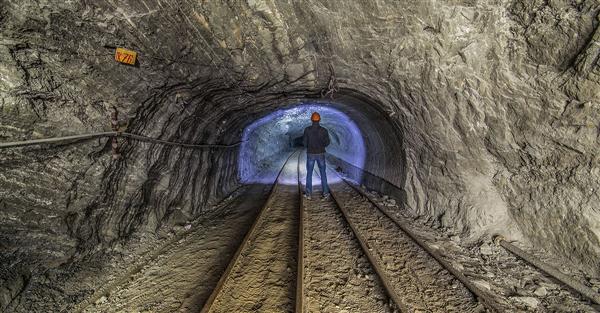Radon Causes Cancer in Uranium Miners
When Did Radon Become a Big Deal?

Radon gas initially becomes a “big deal” when the correlation between underground Uranium miners and lung cancer was learned.
Radon (specifically radon-222), a well-documented cause of lung cancer in underground miners, is a contaminant of indoor environments, including homes and schools. This odorless and invisible gas is a naturally occurring decay product of radium-226, the fifth decay product of uranium-238. Uranium-238 and radium-226 are constituents of most soils and rocks, so radon is found in the gas present in soils. Radon decays with a half-life of 3.82 days into a series of solid, short-lived radioisotopes that are collectively referred to as radon progeny (formerly radon daughters) or radon decay products. Two of the progeny, polonium-218 and polonium-214, emit particles during decay. When these emissions take place in the lung as inhaled and deposited progeny undergo decay, the cells lining the airways can be damaged in such a way that lung cancer can eventually occur.
Research over the last 20 years has shown that radon is a ubiquitous indoor air pollutant, reaching concentrations in some residences as high as what was found in mines where excess lung cancers occurred in underground workers. The predominant source of radon in indoor air in homes is the soil beneath the structures, but building materials, water used in the homes, and utility natural gas can also contribute. Radon concentrations are readily measured with passive devices, and early data showed that the distribution of concentrations was approximately lognormal with a mean of about 1.5 picocuries per liter (pCi/L)(Nero et al., 1986). Data gathered from over 4,000 U.S. homes in 1989-1990showed that the average
How Does Radon Cause Lung Cancer?
The problem is not radon, but rather the radioactive particles it produces. As radon atoms undergo radioactive decay, they disintegrate into radiation and radon progeny ("daughters") - solid heavy metal particles of lead, polonium, and bismuth. These minute, electrically charged and chemically active particles float in the air, and when breathed in, some (less than 1%) get trapped permanently in the airways. The accumulated radioactivity in the airways is proportional to the radon level - at the 4 pCi/L level, about 600,000 radioactive particles get trapped in the lungs every hour.The deposition in the lungs depends on whether the particles are attached to airborne dust or smoke, or unattached. Unattached daughters lodge deeper in the lung, which explains the severity and the type of radon-induced deep-lung cancers in non-smokers.
Fox, S. A. (2014). Downwind : A People's History of the Nuclear West. Lincoln: Bison Books.
National Research Council, (. (U.S.). (1994). Health Effects of Exposure to Radon : Time for Reassessment?. Washington, D.C.: National Academies Press.
 262-955-5701
262-955-5701




